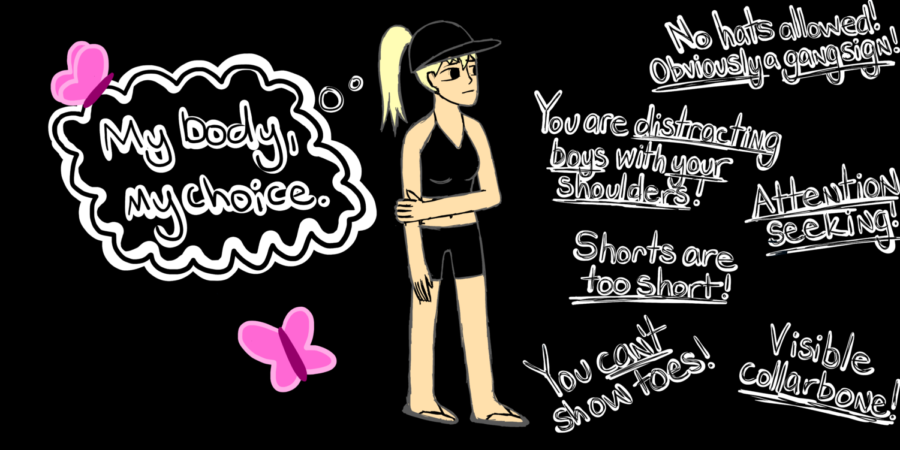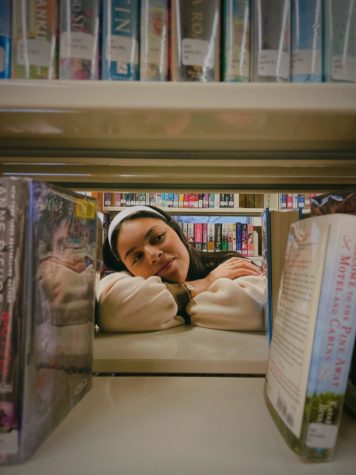Double standards, stereotypes cause outrage over dress code
September 23, 2021
Due to the pandemic, a majority of students have not been in school for nearly two years. Upon return to school students are finding it difficult to adjust to having a dress code.
The student handbook states that the building wants to encourage all students to dress in a fashion that reflects good taste and a style appropriate for school.
“To maximize teaching and learning I do feel there should be a standard of dress that is acceptable to be in school,” assistant principal Matt Ambrose said.
The school’s dress code is also supported by the staff.
“Just as businesses require business attire, I believe that the school’s dress code sets the goals for appropriate dress here at school,” math teacher Connie Billerman said.
Students complain about the dress code, despite the fact that administrators don’t see a problem with rules.
“Just let people wear what they want,” junior Lilli Mascotte said. “If it’s hot outside I want to wear what I’m comfortable in.”
Some female students feel that most of the clothing restricted is on the feminine side. Therefore they detect a double standard.
“Boys should be held to the same standards as the girls, they shouldn’t have their underwear hanging out their pants,” Amy Bonomo, mother of two daughters, said.
Male students may be dress coded for this reason, although female students are usually being punished first for having their shoulders exposed.
Administrators disagree with students who believe there is a double standard.
“The dress code is the same for all students,” Ambrose said.
Clothing that exposes midbodies or short shorts and skirts, for example, are discussed in the guidebook as being distracting to students and staff.
“If you think what I wear is distracting then you’re the problem,” Mascotte said.
Even for staff, some apparel might be distracting, making it difficult to educate, according to the guidebook. However, others disagree with this reasoning.
“Clothes shouldn’t affect teaching style,” Bonomo said.
Female students aren’t the only group that have a problem with the school’s dress code. Many African-American students believe that their wardrobe options are also limited.
“It bothers me how durags or bonnets are not allowed in the school, when really it’s more like self care rather than clothing,” sophomore Amaury Solano said.
The district as a whole has a strict no-hat regulation. Except for proven religious or medical reasons, no hats may be worn within the school building during the instructional day. Hats are also not permitted to be worn during any theatrical or school presentations.
African- American students also believe that some restrictions are due to stereotypes that certain clothing is gang-related.
“I don’t feel that certain attire should be banned because of stereotypes or history associated with it. It is the person, not the outfit, that causes someone to act irrationally,” Solano said.
Administrators are aware of certain students’ dissatisfaction with the clothing code.
“I know that styles change and vary from year to year, so depending on what the style at the time is, one group may be affected more than another,” Ambrose said.
Students have been posting on social media and placing posters around the school to express their feelings over the dress code.
Despite the fact that many students want the dress code to be changed, authorities and the district do not appear to be making any changes anytime soon.




